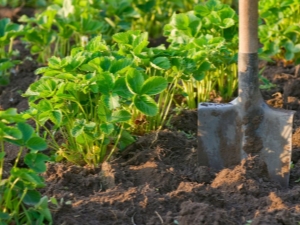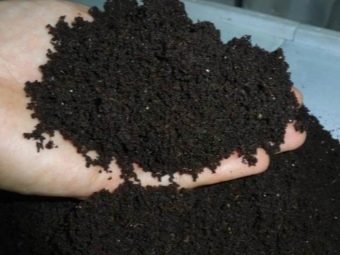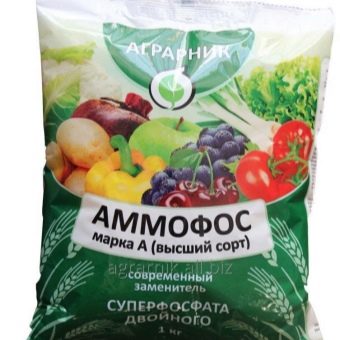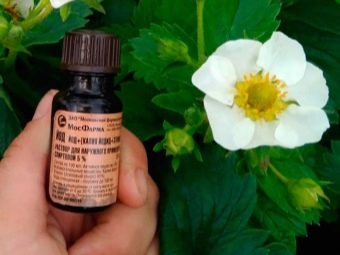Soil for strawberry garden: what is suitable and how to prepare with your own hands?

The composition of the earth with a certain ratio of microelements and minerals is a source of nutrition for the root system and the aerial part of strawberries. Therefore, for the cultivation and abundant fruiting of the culture, it is necessary to fulfill many important requirements, one of which is properly prepared soil.
Place of landing matters
Certain conditions affect the soil composition in which the crop is supposed to be planted.
In this regard, it is worth considering in detail which site is suitable for the plant.
- Strawberries are plants that love sunlight and warmth, which is why natural light should be at least 8 hours a day. This will require a fairly open space, which is not obscured by buildings and trees.
- The site on a slope located in the south-east or south-west is the most preferred place for landing. In the lowlands can not be placed beds, because in the spring they can be washed away by flood.
- It is important to make sure that in the selected area the soil waters are located rather deeply - 1-1.5 m from the surface of the earth.
- For strawberries need a place where there are no drafts and active movement of cold air masses - they can adversely affect the growth of the berries and its yield.
Strawberries grow well only when planted after certain crops, and this fact must be taken into account. It is not recommended to plant a crop if tomatoes, Jerusalem artichoke, potatoes, zucchini or cabbage were grown in the beds before. But the preceding plants useful for her are beans, lentils, peas, carrots, garlic and onions.
The most favorable moment for planting crops is the period from August to September, and by this time the soil for strawberry garden should already be prepared.
What soil is suitable for cultivation
For planting strawberries land needs a certain composition and structure.
Main requirements:
- neutral acidity in terms of 5, 5-8 pH;
- the soil should be moderately moist, on average, humidity is allowed in the region of 70-90%;
- its texture requires loose earth, which passes air and moisture well;
- in order for fruiting to be high, the soil must contain a large amount of organic matter (at least 3%).
A viable berry can be on heavier soils, but in this case it is not necessary to expect a rich and high-quality harvest.
Therefore, we should immediately exclude such variants of the soil for planting.
- Clay soil - it poorly conducts water and air, freezes through at low temperatures, retains moisture, because of which the roots will rot.
- Sandy - too dry and crumbling, its properties are rapid heating and cooling, that is, temperature drops, undesirable for the plant. The water in it is not retained for a long time, so the strawberries can suffer from lack of moisture. Due to its characteristics, this type of soil tends to quickly lose nutrients for culture.
- Peat ground It has its pros and cons - it is characterized by good conductivity of fluid and air, but there are few really valuable substances in it for the successful fruiting of strawberries.
It turns out that the best option for planting is loamy soil, which is the most fertile, as well as sandy, moderately loose, amenable to rapid heating, but not forming on the surface of the crust, which prevents heat and fluid from penetrating to the roots.
Fertilizer land before planting
Land preparation consists in applying various fertilizers to it, otherwise it is meaningless to wait for high yields.
First of all, these are the following organic substances.
- Wood ashwhich can be laid in the aisle, or its solution for the implementation of watering the beds. Per 1 m2 usually take 100 g of substance per 10 liters of water.
- Chicken litter Often used to optimize the soil, because it contains nitrogen. It will also need to be diluted in water at a ratio of 1:20.
- Fertilizer needed is manure (goat, cow). In order to use it, you should wait for it to perepet to prevent the occurrence of unwanted weeds growing wild in the fresh composition.
- For rapid growth and formation of berries, will require the use of humus, which is a source of a large number of nutrients for the plant.
Such works are carried out in the autumn, after picking berries. First, weeds should be removed and the soil acidity should be checked. If the environment is too acidic, it will be necessary to add lime to the ground; if peat prevails, then sand, lime and organic matter will have to be added. Sandy soil needs to be fertilized with the largest amount of organic additives. Mineral fertilizers that are used at this time - "Nitrofos", "Amophos", "Nitroammofosk", these dressings contain nitrogen, phosphorus and potassium.
Feeding frequency
Strawberries must be fed throughout the year, not counting the winter period when the plant is resting.
Therefore, novice gardeners it makes sense to focus on this scheme:
- the first application of mineral fertilizers occurs in early spring;
- then, in order to stimulate fruiting, fertilizing is carried out when ovaries appear;
- further such works are carried out in the summer when the first harvest is gathered;
- after picking berries in the fall, nitrogen must also be applied to the soil.
So, besides organic matter — manure, ash, and compost — elements such as nitrogen, potassium, and phosphorus are vital for a plant. In a small amount of strawberries are needed and other substances. With calcium deficiency, the berries will be watery, as it is responsible for the formation of fiber. Boron is needed for the formation of the root system of seedlings and the formation of ovaries. Culture also requires iodine and manganese, the absence of which in the soil can lead to the appearance of fungus and rot. In addition, thanks to manganese, strawberry fruits have a higher taste.
All these elements can be used for dilution in water and further spraying the bushes.
Substrate for planting
Before planting young plants, soil decontamination with ammonia, manganese or potassium salt will be required.
For about a week, a place is being prepared for culture, for this you need:
- dig the ground with a shovel and forks to a depth of 30 cm, removing stones, weeds;
- for every square meter of land, 15 g of potassium chloride, 60 g of superphosphate, 25 g of potassium salt and 8 kg of compost or manure are needed; if rotten compost is taken, 25 g of potassium sulfate will be needed;
- before planting the soil is watered with water (10 m2 per 1 m2).
It is undesirable to use peat instead of manure and compost, as it is capable of changing acidity, and also strongly retains moisture - for this reason, root decay occurs.
In some cases, it makes sense to plant such siderats as mustard and lupine. It will take their removal after flowering, and the green mass of these plants enriches the soil, improving its composition. This will help the seedlings to quickly strengthen the root system, and in the spring to quickly grow.
To learn how to prepare the soil for transplanting strawberries, see below.




























